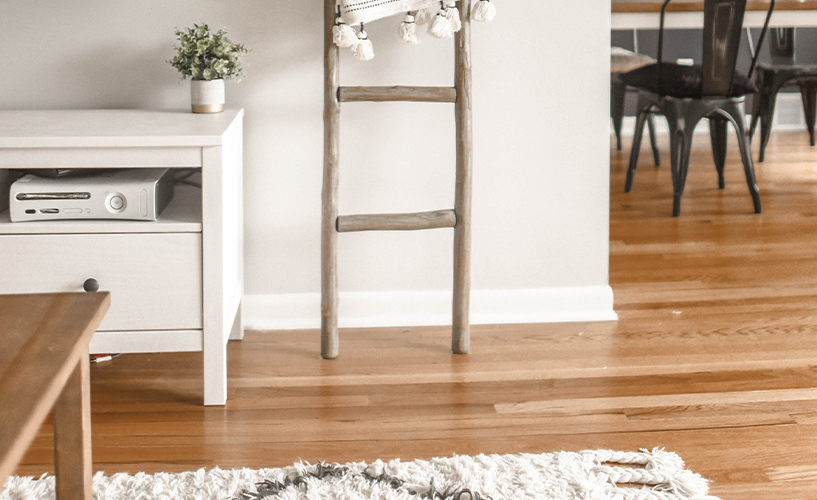
Random Moisture Migration: Where Is It Coming From?
Flooring inspectors commonly evaluate hardwood floors after homeowners notice random areas of dark discoloration and/or opaque bubbles appearing in their engineered or solid hardwood flooring. Naturally, when an inspector sees something like this, they would suspect a moisture problem. But what if the areas affected are not around any water sources? What if discolored areas are tested and show high moisture readings, while the unaffected areas are within normal regional limits? What, then, would be the cause of the discoloration or opaque bubbles?
Moisture-Related Problems: A Troubling Trend Plaguing Concrete Substrates
Moisture-related problems in pre-1980s concrete substrates seem to be occurring more often every year, and inspectors have taken notice. Old subdivisions with track-style homes and regions that have high water tables appear to have the greatest percentage of moisture problems. Installers and retailers should not be held responsible or liable for any monetary loss, damages, or inconveniences from underlying moisture emissions not detected at the time of installation.
A Moisture Mystery
Suppose a house was built in the late 1970s and half-inch pre-finished solid oak hardwood flooring was installed. The installer performed calcium chloride tests in three locations and documented the results showing each location was below four pounds MVER. The adhesive used was recommended for up to eight pounds MVER, and the moisture content readings of the hardwood flooring were at EMC of the home at the time of installation. The coverage rate of the adhesive was per the manufacturer’s guidelines. If the installer followed all the necessary guidelines to have a successful installation, should the installer be at fault when random areas of dark discoloration and/or opaque bubbles appear in the flooring?
Suppose the homeowner hired a leak detection service before inspection, and the results showed that there were no leaks detected. What then?
Let’s take the facts one step at a time:
- We know the moisture content of the hardwood flooring was at EMC.
- We know the calcium chloride results were below the adhesives limitations and the coverage rate was achieved.
- The leak detection service found no leaks, and there were no signs of leaks before installation.
If the facts and evidence all indicated the installer was not at fault and that this was a site-related problem, should the inspector blame the installer?
Locating the Source of Moisture
The only source of moisture left in such a scenario would be the concrete substrate.
The calcium chloride test showed to be acceptable. The installer performed the test in three random locations, per the standard ASTM 1869. For argument’s sake, let’s say one test equals 1 ft.², so only 3 ft.² out of 1000 ft.² was tested. This is less than 0.3% of the total job. In other words, 99.7 % of the area was not tested. The odds of testing in the problem areas were pretty slim.
In my experience inspecting failures like this, the most common source of the problem is the polyethylene sheeting. When I take core samples to view the conditions below the slab, the polyethylene is often in poor condition. It is brittle, degraded, and has holes. Even in those cases when it has not broken down in some way, there is often moisture on the top of the sheeting.
We need to remember that polyethylene from the late 1970s would turn brittle and break apart with too much UV exposure compared to the UV-stabilized polyethylene sheeting on the market today. It was the best technology of the time for preventing moisture from migrating upward into the floor covering. Even so, insurance companies usually will not cover such failures.
Homeowner’s Insurance Exclusions
Most, if not all, insurance companies have property exclusions in their policies that will not cover such moisture-related damage. For example, a general statement may be something like this:
“Water below the surface of the ground, including that which exerts pressure on, or seeps or leaks through a building, wall, bulkhead, sidewalk, driveway, foundation, swimming pool, hot tub or spa, including their filtration and circulation systems, or other structures are not covered.”
How to Protect Yourself
There are a few ways installers or retailers can protect themselves from such a scenario.
- Site evaluation. Complete a thorough site evaluation of the home or facility. Is the landscaping designed so that water will flow away from or toward the home? Is the landscaping below the slab? Does the home have a musty or wet smell?
- Ask questions. Questions might include: When was the home built? What kind of floor covering was originally installed (if not visually evident)? Has there been any other water-related damage?
- Moisture readings. Take several moisture readings and record them even if they do not show elevated. Inform the customer that due to the age of the home, there is a possibility that installing a wood floor now could reveal an underlining problem later.
- Moisture remediation. Let the property owner know you would recommend a moisture remediation system, such as a one-step adhesive, a two-part adhesive system, or even an epoxy system. All of these systems can handle elevated moisture vapor emissions and demonstrate you are taking every effort to achieve a successful installation.
- Contract of Services. Because of potential legal concerns, every installer or retailer should have a contract of services signed before starting any job. The contract should include provisions for this type of failure. Here is just an example, “It is hereby mutually agreed that the Contractor shall not be held responsible or liable for any monetary loss, damages, or inconveniences from underlying moisture emissions not detected at the time of installation, that all efforts have been made to detect such a problem and are therefore not warranted.”
- Documentation. To be on the safe side, always document your projects from start to finish. Keep a record of warranties, products, materials, methods, contracts, change orders, etc.


